TMYTEK’s Rapid mmWave Prototyping Solution Enables NI Ettus USRP X410 Advanced Wireless Communication & Sensing Capabilities
POSTED ON OCTOBER 25, 2022 BY TMYTEK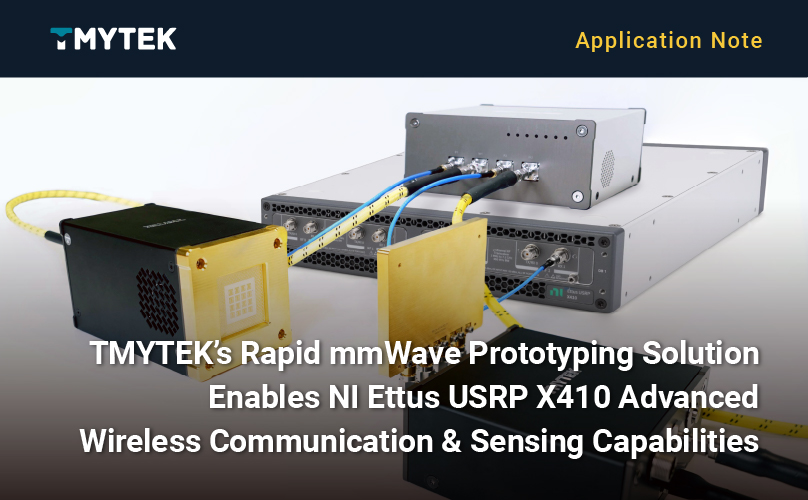
mmWave for Communication and Sensing
Recent 5G/B5G, SATCOM, and 6G trends have led to an increase in demand for mmWave technologies. Advanced communication and sensing system applications require greater throughput, larger bandwidth, lower latency, and/or hybrid positioning, where mmWave technologies offer both significant bandwidth and high data rates for communications, as well as higher frequencies with shorter wavelengths which increase sensing range resolutions. However, high frequency propagation fading into the mmWave band raises significant challenges. Researchers have been studying comprehensive technologies that measure Channel State Information (CSI) to estimate the radio channel characterization in complex NLOS environments for application in beamforming systems that realize Massive MU-MIMO through beam steering and beam tracking, as demonstrated in a proof-of-concept prototyping system we devised for evaluation in an emulation platform with a standard protocol stack to simulate real-world operations in order to accelerate the process from prototyping to commercialization. tracking. And for simulating the real-world operations of communication systems, it could be demonstrated in a proof-of-concept prototyping system for an evaluation in an emulation platform with a standard protocol stack in order to accelerate the process from prototyping to commercialization.
Rapid mmWave Prototyping Solution
TMYTEK, a mmWave total solution pioneer, offers a ready-to-use platform to accelerate the process from prototyping to commercialization. The Rapid mmWave prototyping solutions can be composed of:
- Frequency Converter: UD Box 5G, an up-and-down converter that features an ultra-wideband that covers the most of the Sub-6 GHz band to fully utilize the 5G NR FR2 mmWave band with performance EVM guaranteed.
- Beamformer: BBox 5G series, a single box integrating PAs, LNAs, Tx/Rx switches, and phase shifters with a choice of a 4x4 or 1x4 array antenna kit.
- TMXLAB KIT (aka TLK): A concise and intuitive GUI for beamforming experiments and frequency settings, including APIs for LabVIEW, MATLAB, Python, C++, and C#.
- NI Ettus USRP X410: The NI Ettus USRP X410 provides four Tx and four Rx channels with a 1 MHz to 7.2 GHz frequency range, a bandwidth of 400 MHz, and 10 Gbe/100 Gbe ports for high-throughput streaming.
We have combined our solution with NI Ettus USRP X410 platform to enable the ability to experiment with their protocol and algorithm innovations with full mmWave capabilities, as shown in Figure 3. The X410 is NI’s most powerful USRP as of its introduction in June 2021 and offers features not found in its legacy series and supports 4 Tx/4Rx radio with 400 MHz bandwidth and 5G NR FR2 standard waveforms that can be applied to any mmWave communication experiment.
This combination enables NI Ettus USRP X410 Sub-6 GHz radio platform mmWave capability, which has been intensively tested for system compatibility and performance. The following test cases are based on the system architecture in Figure 1 that demonstrates the expansion of the SDR Sub-6 GHz spectrum to 5G FR2 mmWave bands using the UD Box 5G while maintaining excellent EVM performance. The gain and phase of multiple RF channels to emulate beamforming behaviors can also be fine-tuned using the BBox 5G.
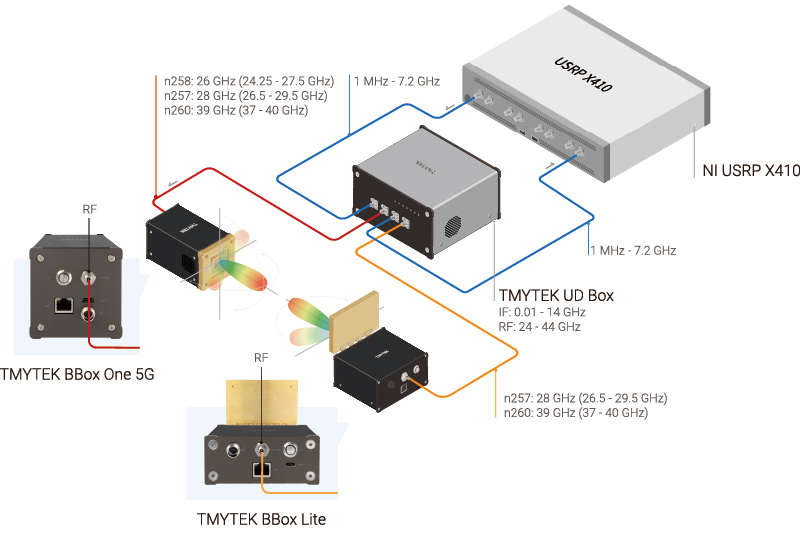 Figure 1. System architecture of TMYTEK’s rapid mmWave prototyping solution with NI Ettus USRP X410
Figure 1. System architecture of TMYTEK’s rapid mmWave prototyping solution with NI Ettus USRP X410Test Case 1 | Transmit and Analyze 5G NR mmWave
To convert the Sub-6 GHz signals of NI’s X410 to 28 GHz, the TMYTEK UD Box 5G up/down frequency converter and BBox 5G beamformer frontend are used to transmit and analyze the 5G NR FR2 waveform in true mmWave bands. mmWave frequency settings, toggling each channel on/off, and gain and phase settings can be individually controlled by TLK, as well as LabVIEW’s GUI as shown in Figure 4. The EVM of a signal with 400 MHz bandwidth and 256 QAM performed with excellent quality that was superior to 3GPP’s TS 38.521 specification of 3.5% (-29dB) for 256 QAM (see Figure 5).
- Place the BBox One and BBox Lite across from each other at a distance no greater than 50 cm
- Connect BBox, UD Box, and X410 together as indicated and connect to the control PC
- Configure two NI X410 waveforms (@2 GHz):
a. 5G FR2/ 100 MHz/ 256 QAM/ 30K SCS
b. 5G FR2/ 400 MHz/ 256 QAM/ 120K SCS - Configure the UD Box IF: 2 GHz and RF: 28 GHz
- Set the BBox One and BBox Lite to their default settings (maximum gain) for result of EVM -41 dB @ 100 MHz and EVM -35 dB @ 400 MHz [1]
- Block the signals between BBox One 5G and BBox Lite using your hand or a piece of metal, then remove it. You will see chaos constellation demonstrating the real-time analysis
- Use the TMXLAB KIT GUI to turn off each BBox Lite RF channel individually. You will see the power level decrease as each channel is turned off.
[1] X410 TX EVM for reference: -44dB@2.5G/100MHz/30k SCS; -38dB@2.5G/400MHz/120k SCS
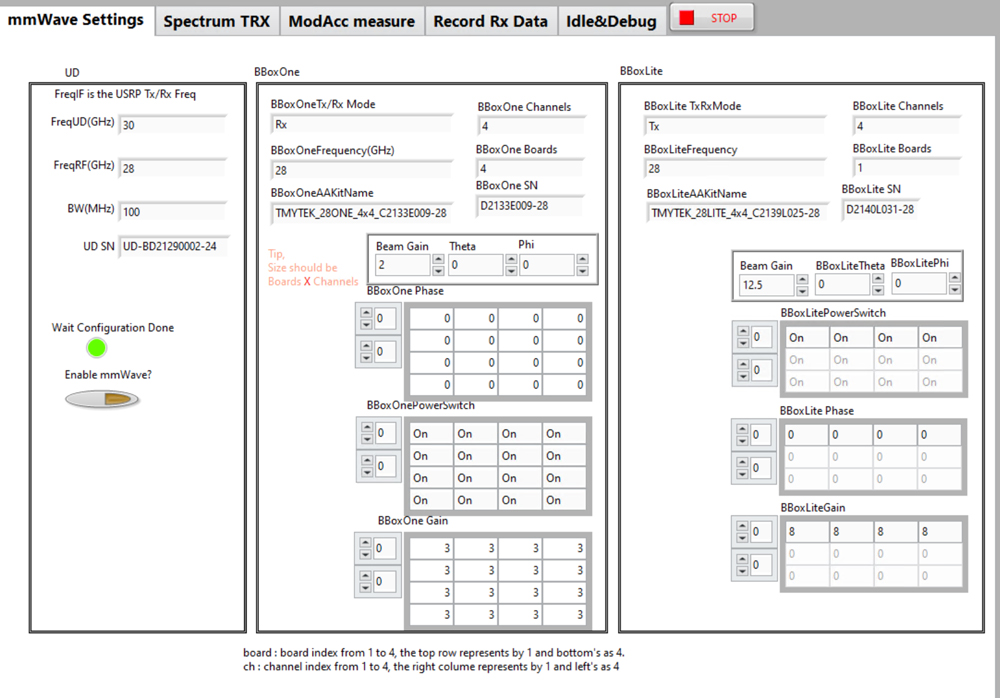 Figure 2. LabVIEW GUI of UD Box 5G, BBox One 5G and BBox Lite 5G
Figure 2. LabVIEW GUI of UD Box 5G, BBox One 5G and BBox Lite 5G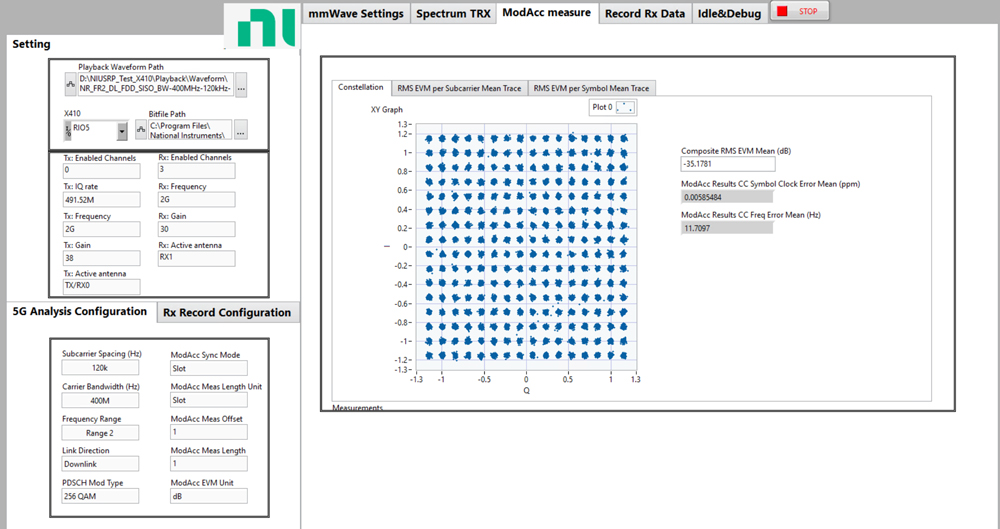 Figure 3. EVM result of 5G NR FR2 400MHz/256QAM/120K SCS waveform
Figure 3. EVM result of 5G NR FR2 400MHz/256QAM/120K SCS waveform*NI Ettus USRP X410 TX EVM for reference: -38dB@2.5G/400MHz/120k SCS
Test Case 2 | Beam Steering
Beamforming technology is essential for mmWave applications. Here we’ll use a beam management platform to visually experiment with beamforming behavior on the TMXLAB Kit (TLK) GUI as shown in Figure 4. Beams can be easily grabbed and steered to see the result of misalignment. TLK is also a helpful tool for simulating beam tracking. Figure 5. shows a setup with the BBox Lite 5G moved azimuthally and the BBox One 5G beam aimed to align with the BBox Lite 5G. This demonstrates how easy and intuitive it is to recover the signal by setting the boresight and beam steering angle. This beamforming testbed also offers an extremely useful platform for beam management algorithm developers.
- Setup the same hardware from Test Case 1, ensuring the BBox One 5G and BBox Lite are across from each other at a distance no greater than 50 cm
- Set the boresight of the BBox One 5G via its GUI to ensure a perfect constellation is displayed
- Move the beam around via the BBox One 5G GUI. You’ll see the random signal pattern
- Reset the boresight of the BBox One 5G via its GUI to ensure a perfect constellation is displayed again
- Move the BBox Lite 30° in the azimuth relative to the BBox One 5G. You’ll see the random signal pattern again
- Set the steering angle in the BBox One 5G GUI to 30°. The signal will be recovered
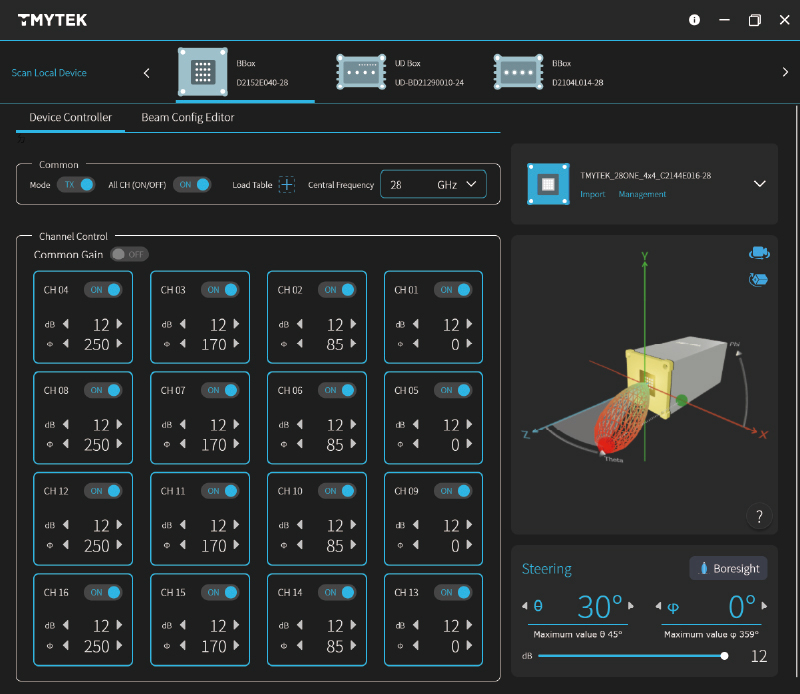 Figure 4. TMXLAB Kit (TLK) GUI
Figure 4. TMXLAB Kit (TLK) GUI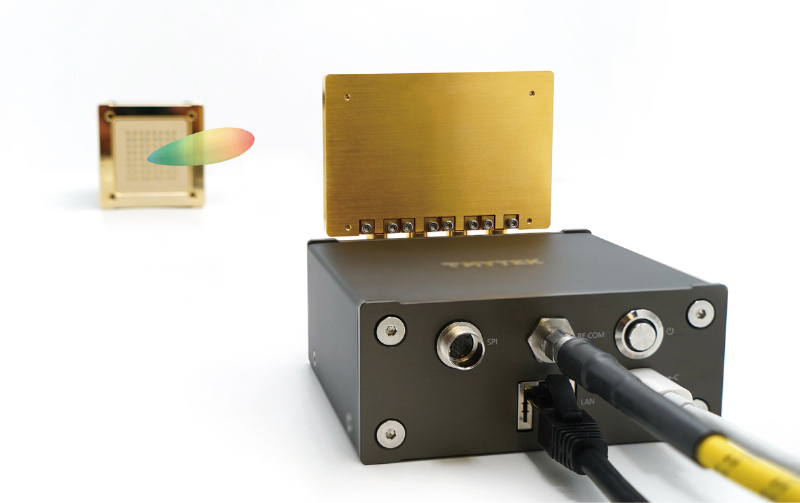 Figure 5. Beam steering experiment by azimuth
Figure 5. Beam steering experiment by azimuthPotential Use Cases
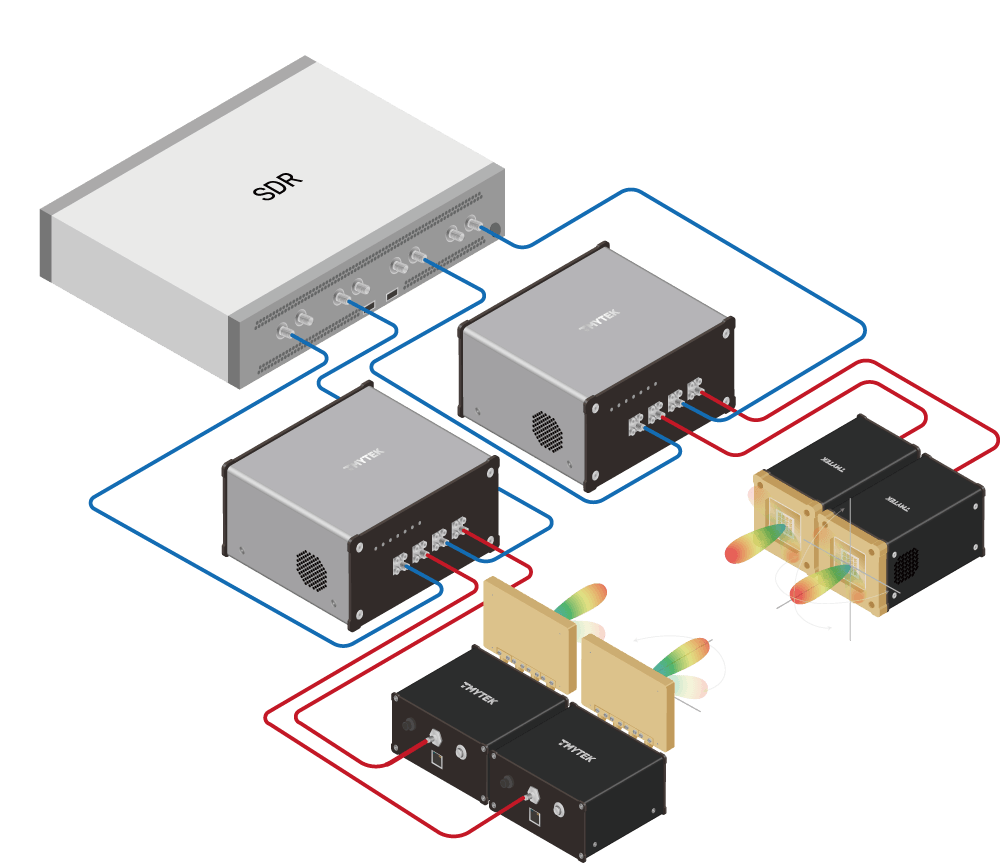 Figure 6. MIMO Architecture
Figure 6. MIMO Architecture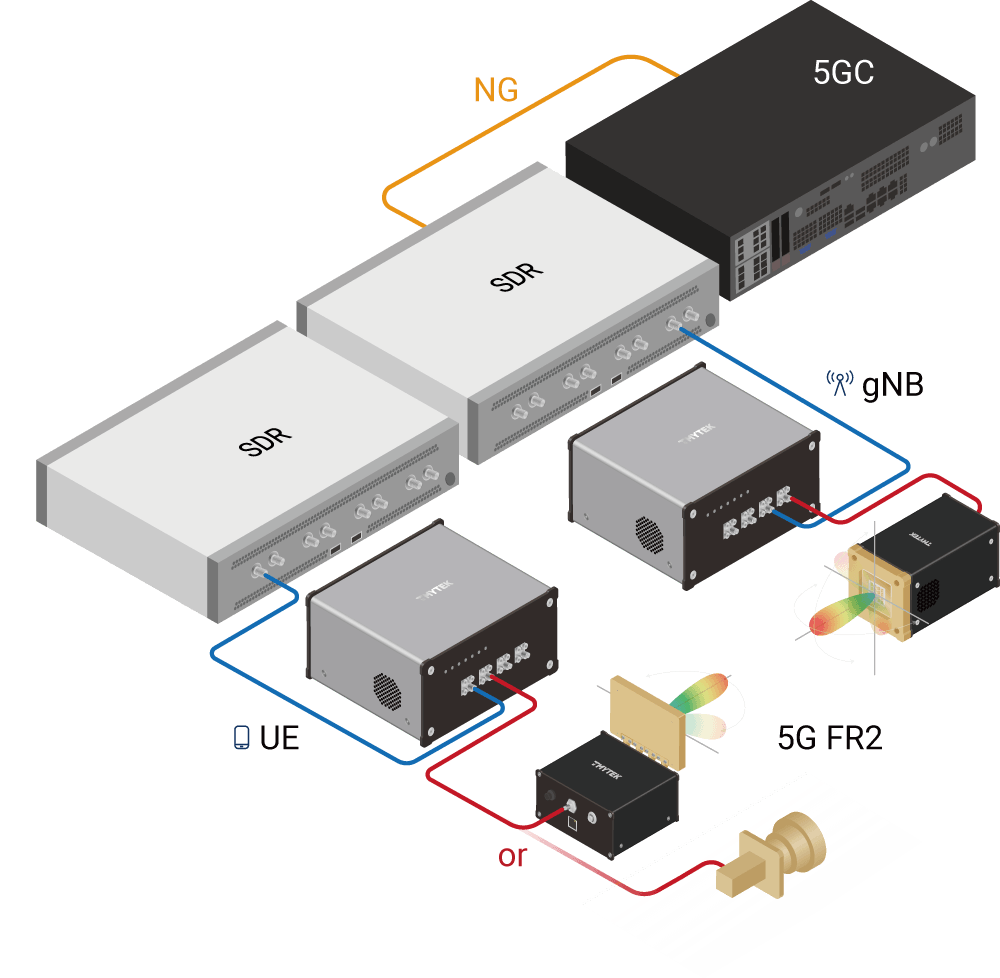 Figure 7. 5G O-RAN Communication System
Figure 7. 5G O-RAN Communication SystemKey Takeaways
This solution further enables mmWave capabilities for advanced research and commercialized development. The key takeaways are categorized below by solution features, what advantages TMYTEK offers, and how it benefits customers.
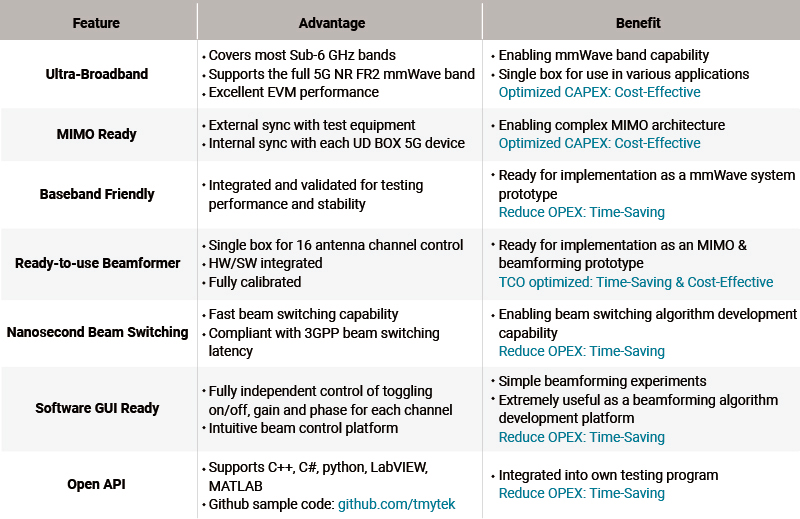
*Github sample code: https://github.com/tmytek
Summary
By integrating the ready-to-use beamformers BBox 5G series and ultra-wideband frequency convertor UD Box 5G series, we easily setup a fully-functioning beamforming and beam steering platform to explore mmWave concepts and how it is applicable to advanced research and commercialized development. It provides system developer to overall evaluate, experiment and design from protocol to algorithm. Both for signaling to non-signaling test, the solution is already deep integrated and validated together for system compatibility and performance guarantee.
The TMYTEK Rapid mmWave Prototyping Solution together with NI USRP platform, that is offering the experiment domain covers wireless communication prototyping to enable 5G/B5G and 6G leading research topics including MIMO, communication and sensing, wireless AI, mmWave beamforming and Reflective Intelligent Surface (RIS), etc.